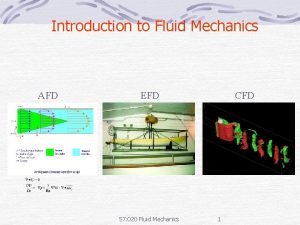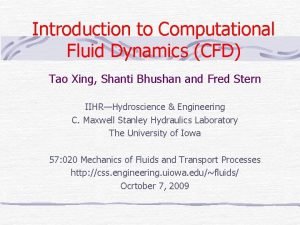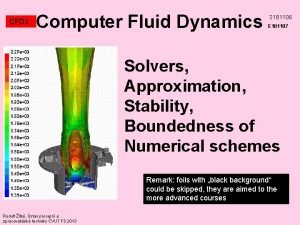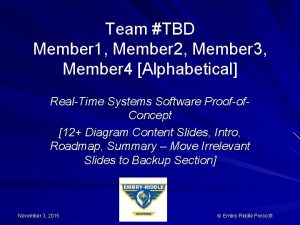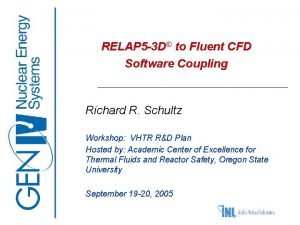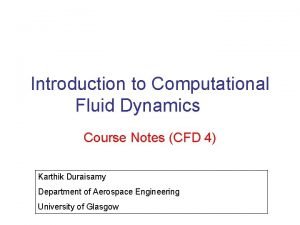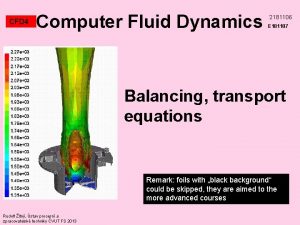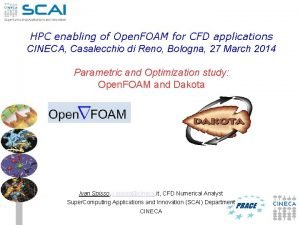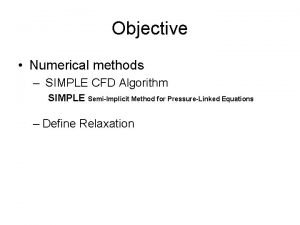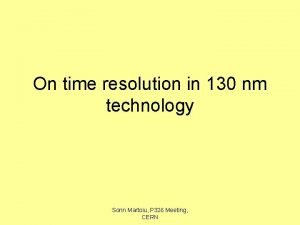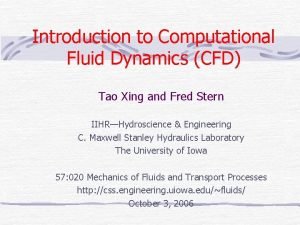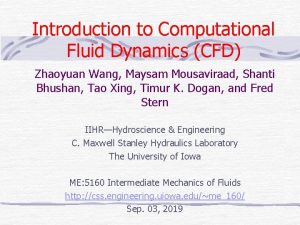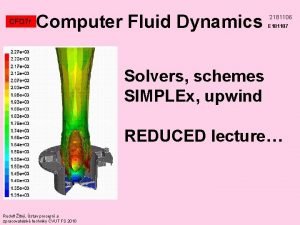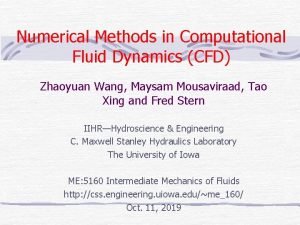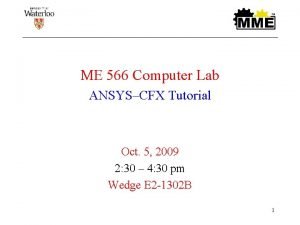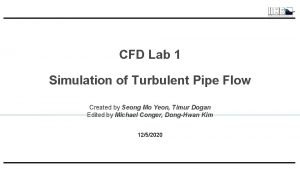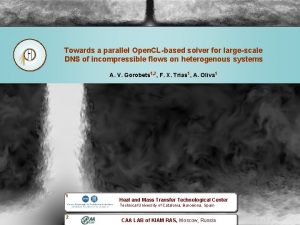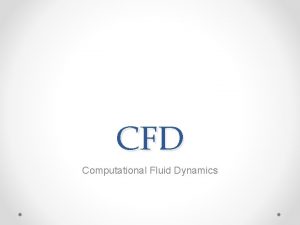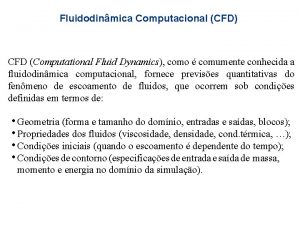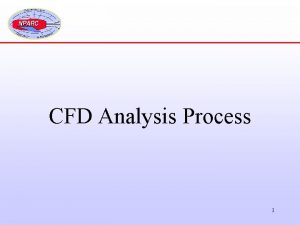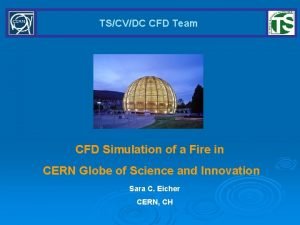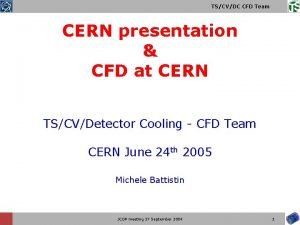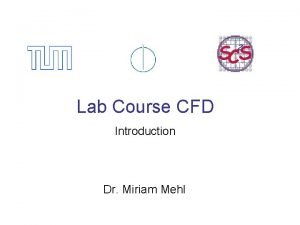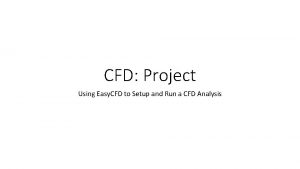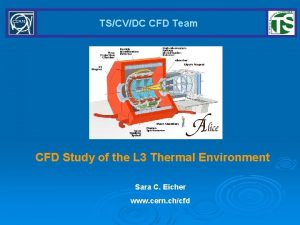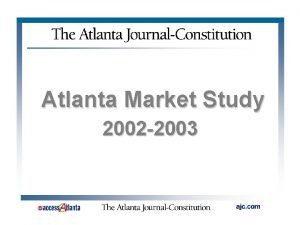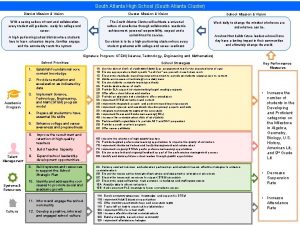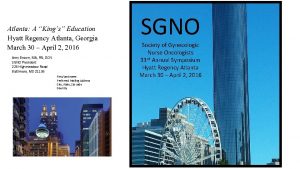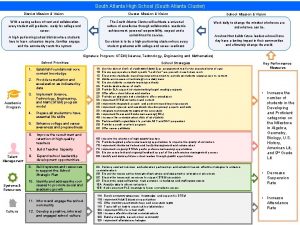Parallel CFD 2012 May 2012 Atlanta USA Towards



























- Slides: 27

Parallel CFD 2012, May 2012, Atlanta, USA Towards a parallel Open. CL-based solver for large-scale DNS of incompressible flows on heterogenous systems A. V. Gorobets 1, 2, F. X. Trias 1, A. Oliva 1 1 Heat and Mass Transfer Technological Center Technical University of Catalonia, Barcelona, Spain 2 CTTC UPC, Spain, http: //cttc. upc. es CTTC UPC, Spain, http: // CAA LAB of KIAM RAS, Moscow, Russia 1

Parallel CFD 2012, May 2012, Atlanta, USA Applications with high computing power demands Direct numerical simulations of incompressible flows ● ● ● Incompressible turbulent flows with heat transfer High order numerical schemes Simplified geometry but complex physical phenomena High space and time resolution, long time integration period Validation basis for turbulence models Differentially heated cavity Ra up to 1012 (110 M nodes) Impinging jet, Re=20000 (100 M nodes) Surface mounted cube, Re=7300 (16 M nodes) Square cylinder, Re=22 K (75 M nodes) Square duct, Re_tau=1200 (170 M nodes) CTTC UPC, Spain, http: //cttc. upc. es 2

Parallel CFD 2012, May 2012, Atlanta, USA A CFD algorithm for incompressible flows ● Navier-Stokes system to solve: . The algorithm of the time step ● Discrete system for pressure-velocity coupling: where 1. Predictor velocity field, , is obtained explicitly 2. Correction, , is obtained from the Poisson equation 3. Resulting velocity field, , is obtained 4. Energy equation is solved explicitly ● Fractional step projection method: Predictor velocity: Unknown velocity: where Mass conservation equation: The Poisson equation CTTC UPC, Spain, http: //cttc. upc. es 3

Parallel CFD 2012, May 2012, Atlanta, USA The Poisson solver for cases with one periodic direction ● The method is based on a time-consuming preprocessing ● Allows flexible configuration for different parallel systems, CPU groups and problem sizes ● 3 D geometry is restricted to extruded 2 D shapes with a constant mesh step, so called “ 2. 5 D” ● A multigrid-like extension makes the solver applicable for fully 3 D configurations The algorithm of the solver 1. Fourier diagonalization using FFT uncouples 3 D problem into set of independent 2 D problems (planes) 2. The Schur complement based direct method is used to solve planes that correspond to lower Fourier frequencies 3. 3. The preconditioned conjugate gradient (PCG) method is used to solve the remaining planes 4. Inverse FFT to restores solution of the 3 D problem. Uncoupling of a 3 D domain using FFT Gorobets, F. X. Trias, M. Soria and A. Oliva, “A scalable parallel Poisson solver for three-dimensional problems with one periodic direction”, Computers & Fluids journal, 39 (2010) 525 -538, Elsevier CTTC UPC, Spain, http: //cttc. upc. es 4

Parallel CFD 2012, May 2012, Atlanta, USA The MPI+Open. MP two-level parallelization MPI parallelization ● Domain is decomposed into P = P x x Pyz parts in all 3 directions ● Periodic direction is decomposed in Px parts: FFT is replicated within 1 D groups and each FFT is sequential. ● Each plane is decomposed into Pyz parts ● First D planes are solved with the direct method, the remaining planes with the iterative method Open. MP parallelization ● Explicit part is parallelized by decomposing loops over nodes ● FFT stages (1, 4) are parallelized in the same way: set of subvectors is divided between threads FFT itself stays sequential! ● The set of planes is divided between threads on stages 2, 3 ● I/O and MPI communications are performed by thread 0 A. Gorobets, F. X. Trias, R. Borrell, O. Lehmkuhl, A. Oliva, “Hybrid MPI+Open. MP parallelization of an FFT-based 3 D Poisson solver with one periodic direction”, Elsevier, Computers & Fluids (2011) CTTC UPC, Spain, http: //cttc. upc. es 5

Parallel CFD 2012, May 2012, Atlanta, USA Speedups with MPI+Open. MP Speedup varying Pt, Pyz=64, Px=1, MVS 100 K ● In total P = Px x Pyz x Pt CPU cores engaged ● With Px=8 and Pt=8 the solver reaches its limits on 8 -core nodes ● However Pyz = 200 is still far from its limits, 12800 cores just was maximum available for tests ● Till Pyz = 800 it works well, so we estimate limits as at least 800 x 8 x 8 = 51200 CPU cores ● Symmetric extension for cases with domain symmetry allows to scale this number up to 4 times leading beyond 105 cores Speedups varying Px, Pyz=200, Pt=8, Lomonosov supercomputer Mesh 2: 330 millions of nodes CTTC UPC, Spain, http: //cttc. upc. es Speedup varying Pyz, Pt=8, Px=1, Lomonosov Mesh 3: 1003 millions of nodes 6

Parallel CFD 2012, May 2012, Atlanta, USA Extension of the parallel model “usual” supercomputer with hybrid nodes ● Nodes of a supercomputer are coupled by means of MPI within distributed memory model and MIMD parallelism ● Open. MP provides parallelization inside multi-core nodes within shared memory model and the same MIMD parallelism ● Open. CL engages GPUs, where SIMD is used on the level of SMs CTTC UPC, Spain, http: //cttc. upc. es 7

Parallel CFD 2012, May 2012, Atlanta, USA Using GPUs A program for a heterogeneous system consists of a CPU code, so called host code, and a GPU code, so called kernel code. ● CUDA - Compute Unified Device Architecture Is now most popular, can work only on NVidia hardware ● Open. CL - Open Computing Language works on both NVidia and AMD (ATI) Open. CL was chosen for its portability Comparison of GPU vs. CPU ● Streaming processors with SIMD parallelism ● Much more cores – hundreds, thousands ● Latency hiding for memory access ● Complex memory hierarchy ● 5 -6 times bigger memory bandwidth ● 2 -3 times more power consumption ● >3 times more expensive (NVidia) Open. CL memory model CTTC UPC, Spain, http: //cttc. upc. es NVIdia Fermi 8

Parallel CFD 2012, May 2012, Atlanta, USA Equipment Reference CPU: Interconnection 5. 6 Gbit Latency 10 -6 sec. ● Intel Xeon X 5670 2. 93 GHz 12 Gflops, 32 Gb/s PCI-Express GPU devices: Node Node ● NVidia Tesla C 2050 (K 100) ● AMD Radeon 7970 Computing node 12 CPU cores at 2. 93 GHz 96 Gb RAM DDR 3 515 Gflops, 144 Gb/s 947 Gflops, 264 Gb/s ● NVidia Ge. Force GTX 480 ● AMD Radeon 6970 164 Gflops, 177 Gb/s 3 GPU NVidia C 2050: 3 x 448=1344 cores 3 x 2. 5 = 7. 5 Gb DDR 5 Supercomputer К 100 (www. kiam. ru) 683 Gflops, 176 Gb/s Computing module NIISI RAS CTTC UPC, Spain, http: //cttc. upc. es 9

Parallel CFD 2012, May 2012, Atlanta, USA The overall algorithm and basic operations ● Momentum equation Basic operations c o m p l e t e • diffusion operator (3 x op. 1) • convection operator (3 x op. 2) • mass force term (op. 1) • summation of terms (3 x op. 3. 3) 1. Diffusion stencil product 2. Convection stencil product ● Energy eq. 3. Linear field operations: y = a 1*x 1+…+an*xn + c; n from 1 to 4 • diffusion operator (op. 1) • convection operator (op. 2) • summation of terms (op. 3. 3) 4. FFT and IFFT ● Intermediate calculations • get predictor fields (some linear field operation) • boundary conditions for velocity and temperature • calculate divergence field, the r. h. s. for the Poisson eq. (op. 1 x 3) ● Mass conservation eq. - Poisson communications GPU → CPU: D planes of r. h. s. vector • FFT (op. 4) • DSD for planes 1, . . , D - on CPU • CG for planes D, . . , Nx • Sp. MV (op. 5), dot product • IFFT (op. 4) t o d o 5. Sparse matrix vector product GPU → CPU → GPU: halos, dots CPU → GPU: D planes of solution vector ● Intermediate calculaitons • gradient calculation (op. 1 x 3) • linear field operations to get resulting velocity field ● Time integration step, average fields processing • linear field operations ● Halo update CTTC UPC, Spain, http: //cttc. upc. es GPU → CPU → GPU: halos 10

Parallel CFD 2012, May 2012, Atlanta, USA Details on stencil product computing pattern Diffusion stencil product ● It is in fact a 19 -diagonal Sp. MV u = Dv for “ 3 D” vectors of size N = Nx x Nyz ● The matrix consists of Nx equal blocks hence only one “ 2 D” block of size Nyz is stored ● The stencil is stored as 19 fields flattened in 1 D vectors ● Offsets in all directions are pre-calculated for fast access to neighboring nodes Subdomain nodes Halo nodes Extended subdomain border Borders between subdomains for the center node (i, j, k) positioned in memory at P-th array position (i+1, j, k) is at P+1, (i, j+1, k) is at P+off_y, (i, j, k) at P+off_z instead of calculating position directly by #define _AMD_3 D(i, j, k) ((i-OFFX) + (j-OFFY)*Nx + (k-OFFZ)*Nxy) where OFFX, OFFY, OFFZ – halo offsets ● Preprocessor macro programming is extensively used stencil Diffusion stencil CTTC UPC, Spain, http: //cttc. upc. es subdomain halo 11

Parallel CFD 2012, May 2012, Atlanta, USA Details on stencil product computing pattern // array field access macro: #define _AMD_2 D(i, j) ((i-OFFY) + (j-OFFZ)*TY) #define _AMD_3 D(i, j, k) ((i-OFFX) + (j-OFFY)*TX + (k-OFFZ)*TXTY) // stencil coefficients and advection field product macro: #define MULSTENCIL(aa) { for(int s=0; s<st_ssize##aa; s++){ /*loop over stencil nodes */ const double buf 1=buf. Stencil[p 2 d]; buf. Stencil+=sfsize; /* left coef */ const double buf 2=buf. Stencil[p 2 d]; buf. Stencil+=sfsize; /* right coef*/ const int offst 3 Daa = offst 3 D##aa*(s+1); /*offset between neighboring levels*/ pr += buf 1*sfphi[p 3 d 0 -offst 3 Daa] + buf 2*sfphi[p 3 d 0+offst 3 Daa]; } __kernel void STENCIL_GPU(__global double *sfphi, __global double *prphi, __global double *buf. Stencil){ const int I = get_global_id(0)/ls; const int l. ID = get_global_id(0)%ls; int p 2 d, p 3 d 0; { const int i 1 = I%NY+off. Y, i 2 = I/NY+off. Z; p 2 d = _AMD_2 D(i 1, i 2); p 3 d 0 = _AMD_3 D(off. X+l. ID, i 1, i 2); } /*central node*/ double pr = buf. Stencil[p 2 d]*(sfphi[p 3 d 0]); buf. Stencil+=sfsize; #define TX 70 #define TY 92 #define TXTY 6440 #define NX 60 #define NY 80 #define NZ 160 #define NYZ 12800 #define OFFX 1 #define OFFY -4 #define OFFZ -4 #define off. X 6 #define off. Y 2 #define off. Z 2 #define add 0 #define sfsize 0 #define ls 1 #define ssizemax 0 #define offst 3 D 0 1 #define offst 3 D 1 70 #define offst 3 D 2 6440 #define st_ssize 0 0 #define st_ssize 1 0 #define st_ssize 2 0 #define st_pos 0 0 #define st_pos 1 0 #define st_pos 2 0 MULSTENCIL(0); MULSTENCIL(1); MULSTENCIL(2); prphi[p 3 d 0]=pr; } CTTC UPC, Spain, http: //cttc. upc. es 12

Parallel CFD 2012, May 2012, Atlanta, USA Details on stencil product computing pattern Convection stencil product ● Is much more complicated, since C is C(v), where v is the current velocity field, and since the mesh is staggered calculation of indexes turns to a mess ● To compute each resulting coefficient of the stencil a variable number of pre-calculated values is needed its number is less or equal to the size of the stencil legs. ● The data structure that represents a stencil is following: int *st_nr // numbers of “pre-coefficient” positions for each node int *st_spos // stencil data position for each node int *st_i, // indexes of neighbours for each stencil node double *st_coef // stencil coefficients ● Computing each stencil coefficient looks like this: b 2 t 2 b 1 t 2 b 3 t 2 b 4 t 2 // stencil coefficients and advection field product macro: #if(ssizemax==1) /*lo order scheme*/ #define GET_BCPV(padv) (((nr>0) ? bcoef[0]*padv[bi[0]] : 0. 0) + ((nr>1) ? bcoef[1]*padv[bi[1]] : 0. 0)) #else /*high order*/ #define GET_BCPV(padv) (((nr>0) ? bcoef[0]*padv[bi[0]] : 0. 0) + ((nr>1) ? bcoef[1]*padv[bi[1]] : 0. 0) + ((nr>2) ? bcoef[2]*padv[bi[2]] : 0. 0) + ((nr>3) ? bcoef[3]*padv[bi[3]] : 0. 0)) #endif CTTC UPC, Spain, http: //cttc. upc. es 13

Parallel CFD 2012, May 2012, Atlanta, USA Poisson solver GPUzation ● DSD solver is fully on CPU – too much MPI traffic and complexity ● CG – approx. inverse or two-level preconditioned with block-CG ● Multi-Sp. MV, multi-dot – communications combined for all remaining planes ● Communication and computation overlap for MPI and GPU-CPU comms The algorithm of the solver 1. 2. Fourier diagonalization using FFT uncouples 3 D problem into set of independent 2 D problems (planes) 3. The Schur complement based direct method is used to solve planes that correspond to lower Fourier frequencies 3. The preconditioned conjugate gradient (PCG) method is used to solve the remaining planes 4. Inverse FFT to restores solution of the 3 D problem. Operations of the solver • FFT (op. 4) • DSD for planes 1, . . , D - on CPU • CG for planes D, . . , Nx • Sp. MV (op. 5), dot product • IFFT (op. 4) CTTC UPC, Spain, http: //cttc. upc. es communications GPU → CPU: D planes of r. h. s. vector GPU → CPU → GPU: halos, dots CPU → GPU: D planes of solution vector 14

Parallel CFD 2012, May 2012, Atlanta, USA Performance on GPU Net performance, Gflops* Mesh 430 K The test case ● DHC typical case is used Xeon 2050 7970 diffusion 4. 4 75 150 convection 2. 6 44 93. 1 ● 4 -th order scheme % of peak ● Mesh sizes 430 K, 770 K, 1. 2 M nodes Mesh 430 K ● Imitates a typical computing load Xeon 2050 7970 diffusion 37 14. 5 15. 8 convection 22 11. 7 9. 8 *by fairly counting the number of operations in the algorithms 1 CPU core vs 1 GPU 6 -cored Xeon vs 1 GPU* 2050 7970 diffusion 4. 4 9. 3 39 convection 3. 8 8. 7 17. 5 38 momentum eq. 3. 9 8. 4 CPU time 2050 speedup 7970 speedup 2050 7970 diffusion 0. 08 22. 5 49. 7 diffusion 5 11. 1 convection 0. 25 17. 6 39. 9 convection 3. 9 8. 9 momentum eq. 0. 39 18. 3 40. 6 momentum eq. 4. 1 9 Mesh 770 K CPU time 2050 speedup 7970 speedup diffusion 0. 05 20 42 convection 0. 16 17. 3 momentum eq. 0. 241 Mesh 1. 2 M Mesh 770 K Mesh 1. 2 M *assuming typical Open. MP speedup 4. 5 out of 6 cores CTTC UPC, Spain, http: //cttc. upc. es 15

Parallel CFD 2012, May 2012, Atlanta, USA Overal multi-GPU parallel model ● CPUs only for control, MPI comms and DSD – if GPU is much faster MPI – 1 st level 2 nd level domain decomposition Open. CL – 3 rd level ● CPUs and GPUs are computing together - if CPU is comparable to GPU 2 nd level domain decomposition CTTC UPC, Spain, http: //cttc. upc. es MPI – 1 st level Open. MP – 3 rd level Open. CL – 3 rd level 16

Parallel CFD 2012, May 2012, Atlanta, USA Technology of porting operations ● Each operation has standalone separated test that loads all the input data from file ● Each operation has GPUzed CPU version ● Everything scalar known at the time of kernel compilation taken to defined constants ● Loops unrolled, branching replaced with preprocessor commands ● Positioning pre-calculated and added as defined constants ● Divisions minimized ● Data access reorganized for achieving coalescing ● Data is properly aligned ● Usage of registers is minimized ● Workgroup size optimized for particular device ● Additional correctness control is implemented for each operation CTTC UPC, Spain, http: //cttc. upc. es 17

Parallel CFD 2012, May 2012, Atlanta, USA General conclusions ● AMD is much faster than NVidia ● On CPU-like kernels NVidia 2050 is ~5 -10 times slower than AMD 7970 (record so far is 12) ● On kernels optimized for NVidia its 2050 is ~2 -3 times slower than AMD 7970 ● AMD software is shameful! ● CUDA easier than Open. CL – is a dramatic delusion ● Open. CL portability is illusion: it works on everything but may work very slow until optimized for particular architecture ● CUDA faster than Open. CL – very questionable statement in most cases performance is equal, however we observed 10 -15% slowdown on certain kernels ● What works well on NVidia works well on AMD. What works well on AMD may appear 10 times slower on NVidia → AMD: yes AMD → NVidia: no ● Optimization priority should be NVidia architecture since its more weak ● Open. CL works well on CPU. Open. CL vs. Open. MP showed like 4. 3 vs. 4. 5 speedup on 6 -cored Xeon CTTC UPC, Spain, http: //cttc. upc. es 18

Parallel CFD 2012, May 2012, Atlanta, USA Flops vs Gb/s ● 7970 has 950 Gflops and 264 Gb/s hence we need 3. 6 flop per byte to get those flops ● 2050 has 515 Gflops and 144 Gb/s, so the same 3. 6 flop per byte to get those flops ● This means around 30 flop per one double! ● Our stencil product say roughly around 0. 25 flops per byte or 2 flop per double… ● GTX 480 with its pitiful 164 Gflops outperformed 2050 around 30%. Memory bandwidth is far more important than flops CTTC UPC, Spain, http: //cttc. upc. es 19

Parallel CFD 2012, May 2012, Atlanta, USA CUDA vs Open. CL CUDA ● Much better infrastructure – manuals, tutorials, support ● In rare cases little better performance ● More software and libs available ● Compilation together with CPU code ● Vendor-locked ● Oriented on particular architecture Open. CL ● More advanced and elegant programming model ● Compilation during runtime of CPU code ● Supported by major hardware vendors – NVidia, AMD, Intel, Apple, … ● Fits wide range of architectures – CPU, GPU, … ● No to Fortran CTTC UPC, Spain, http: //cttc. upc. es 20

Parallel CFD 2012, May 2012, Atlanta, USA AMD vs n. Vidia ● Much better infrastructure ● Better software ● Brutally overpriced GPGPUs – x 10 price for the same chip ● More weak architecture, poor and sometimes very poor performance AMD ● Eats not adapted CPU code much better, hence easier to program ● Bigger memory bandwidth and computing power ● Times faster. Order of magnitude sometimes. Due to advantage in architecture as well ● Software is a shame! Needs window session to be opened, hangs, fails. A mixture of AMD GPU chip and n. Vidia soft would lead to an ideal CTTC UPC, Spain, http: //cttc. upc. es 21

Parallel CFD 2012, May 2012, Atlanta, USA CPU vs GPU Power consumption ● ~100 Wt for 6 core Xeon Speedup must be >2. 5 vs Xeon or > 12 vs 1 core ● ~250 Wt for GPU Price ● ~1 K for Xeon ● ~3 K for Tesla Speedup must be >3 vs Xeon or > 13. 5 vs 1 core Complexity, effort, . . ? . . but if the system is available who cares about speedup? CPU+GPU must just be faster than CPU CTTC UPC, Spain, http: //cttc. upc. es 22

Parallel CFD 2012, May 2012, Atlanta, USA Conclusions Our recent DNS of a square duct at Re_tau =1200, 170 M nodes Our recent DNS of a square duct at Re_tau=1200, 170 M nodes ● GPU is not for kids ● Things rapidly changing and future is not clear ● The large-scale multi-level parallel CFD solver for hybrid systems to be finished soon! Thanks for your attention! CTTC UPC, Spain, http: //cttc. upc. es 23

Parallel CFD 2012, May 2012, Atlanta, USA Symmetric extension for cases with mesh symmetries ● The original system to solve: ● Changing basis in the following way: The vector is decomposed into symmetric and skew-symmetric parts: ● Applying change of basis to the linear system: The algorithm is following: 1. Transform the right-hand-side sub-vector, 2. Solve the two decoupled systems, 3. Reconstruct solution, ● Stages 1 and 3 require a point-to-point communication CTTC UPC, Spain, http: //cttc. upc. es 24

Parallel CFD 2012, May 2012, Atlanta, USA CPU vs GPU ======================== onvection: 0. 490571 sec, 43. 9387 GFlops, 17. 189 Gb/s ================================================ fuion: 0. 132634, 75. 2388 GFlops ======================== _info: _info: _info: _info: _info: Total 1 25. 387849 100. 00 GPU write 10 0. 014997 0. 149967 0. 59 r_cdm 10 0. 241860 2. 418604 9. 53 rc_cdm 10 0. 159842 1. 598423 6. 30 prod_nl_stencil_scaf 30 0. 053276 1. 598270 6. 30 rd_cdm 10 0. 047335 0. 473349 1. 86 prod_stencil_scaf 40 0. 015823 0. 632934 2. 49 rf_cdm 10 0. 015979 0. 159794 0. 63 op: cl_3 vecf 10 0. 018693 0. 186928 0. 74 r_cdm_GPUzed 10 0. 013812 0. 138117 0. 54 rc_cdm_GPU 10 0. 009267 0. 092669 0. 37 NL_STENCIL_GPU 10 0. 009266 0. 092657 0. 36 rd_cdm_GPU 10 0. 002371 0. 023713 0. 09 D STENCIL_GPU 10 0. 002369 0. 023691 0. 09 rf_cdm_GPU 10 0. 000870 0. 008705 0. 03 F STENCIL_GPU 10 0. 000869 0. 008685 0. 03 op: cl_3 vecf_GPUzed 10 0. 001298 0. 012977 0. 05 GPU read 1 0. 038492 0. 15 CTTC UPC, Spain, http: //cttc. upc. es Total 1 37. 945032 100. 00 cr_info: GPU write 10 0. 018545 0. 185451 0. 49 cr_info: r_cdm 10 0. 385833 3. 858332 10. 17 cr_info: rc_cdm 10 0. 250128 2. 501276 6. 59 cr_info: prod_nl_stencil_scaf 30 0. 083371 2. 501128 6. 59 cr_info: rd_cdm 10 0. 080982 0. 809824 2. 13 cr_info: prod_stencil_scaf 40 0. 026940 1. 077591 2. 84 cr_info: rf_cdm 10 0. 026800 0. 267998 0. 71 cr_info: op: cl_3 vecf 10 0. 027911 0. 279112 0. 74 cr_info: r_cdm_GPUzed 10 0. 021045 0. 210450 0. 55 cr_info: rc_cdm_GPU 10 0. 014247 0. 142465 0. 38 cr_info: NL_STENCIL_GPU 10 0. 014245 0. 142453 0. 38 cr_info: rd_cdm_GPU 10 0. 003601 0. 036014 0. 09 cr_info: D STENCIL_GPU 10 0. 003600 0. 036001 0. 09 cr_info: rf_cdm_GPU 10 0. 001275 0. 012755 0. 03 cr_info: F STENCIL_GPU 10 0. 001274 0. 012741 0. 03 cr_info: op: cl_3 vecf_GPUzed 10 0. 001917 0. 019167 0. 05 cr_info: GPU read 1 0. 050634 0. 13 cr_info: cr_info: cr_info: cr_info: cr_info: Total 1 24. 007549 100. 00 GPU write 10 0. 038326 0. 383260 1. 60 r_cdm 10 0. 371780 3. 717800 15. 49 rc_cdm 10 0. 233489 2. 334894 9. 73 prod_nl_stencil_scaf 30 0. 077825 2. 334750 9. 73 rd_cdm 10 0. 082973 0. 829735 3. 46 prod_stencil_scaf 40 0. 027621 1. 104841 4. 60 rf_cdm 10 0. 027535 0. 275351 1. 15 op: cl_3 vecf 10 0. 027771 0. 277709 1. 16 r_cdm_GPUzed 10 0. 009513 0. 095134 0. 40 rc_cdm_GPU 10 0. 006281 0. 062814 0. 26 NL_STENCIL_GPU 10 0. 006280 0. 062797 0. 26 rd_cdm_GPU 10 0. 001634 0. 016338 0. 07 D STENCIL_GPU 10 0. 001632 0. 016320 0. 07 rf_cdm_GPU 10 0. 000616 0. 006161 0. 03 F STENCIL_GPU 10 0. 000614 0. 006140 0. 03 op: cl_3 vecf_GPUzed 10 0. 000976 0. 009764 0. 04 GPU read 1 0. 099515 0. 41 25

Parallel CFD 2012, May 2012, Atlanta, USA Performance on GPU ========================= Convection: 0. 231484 sec, 93. 1169 Flops, 36. 4277 Gb/s ================================================== Diffuion: 0. 068738 150 ========================= cr_info: cr_info: cr_info: cr_info: cr_info: nom o N mode tsum tavg (s) percentage Total 1 15. 700642 100. 00 GPU write 10 0. 025440 0. 254405 1. 62 r_cdm 10 0. 231576 2. 315758 14. 75 rc_cdm 10 0. 147438 1. 474383 9. 39 prod_nl_stencil_scaf 30 0. 049142 1. 474256 9. 39 rd_cdm 10 0. 049354 0. 493539 3. 14 prod_stencil_scaf 40 0. 016448 0. 657906 4. 19 rf_cdm 10 0. 016456 0. 164559 1. 05 op: cl_3 vecf 10 0. 018319 0. 183186 1. 17 r_cdm_GPUzed 10 0. 006380 0. 063796 0. 41 rc_cdm_GPU 10 0. 004099 0. 040988 0. 26 NL_STENCIL_GPU 10 0. 004097 0. 040972 0. 26 rd_cdm_GPU 10 0. 001122 0. 011223 0. 07 D STENCIL_GPU 10 0. 001120 0. 011202 0. 07 rf_cdm_GPU 10 0. 000444 0. 004441 0. 03 F STENCIL_GPU 10 0. 000442 0. 004424 0. 03 op: cl_3 vecf_GPUzed 10 0. 000708 0. 007084 0. 05 GPU read 1 0. 067318 0. 43 CTTC UPC, Spain, http: //cttc. upc. es cr_info: cr_info: cr_info: cr_info: cr_info: Total 1 25. 387849 100. 00 GPU write 10 0. 014997 0. 149967 0. 59 r_cdm 10 0. 241860 2. 418604 9. 53 rc_cdm 10 0. 159842 1. 598423 6. 30 prod_nl_stencil_scaf 30 0. 053276 1. 598270 6. 30 rd_cdm 10 0. 047335 0. 473349 1. 86 prod_stencil_scaf 40 0. 015823 0. 632934 2. 49 rf_cdm 10 0. 015979 0. 159794 0. 63 op: cl_3 vecf 10 0. 018693 0. 186928 0. 74 r_cdm_GPUzed 10 0. 013812 0. 138117 0. 54 rc_cdm_GPU 10 0. 009267 0. 092669 0. 37 NL_STENCIL_GPU 10 0. 009266 0. 092657 0. 36 rd_cdm_GPU 10 0. 002371 0. 023713 0. 09 D STENCIL_GPU 10 0. 002369 0. 023691 0. 09 rf_cdm_GPU 10 0. 000870 0. 008705 0. 03 F STENCIL_GPU 10 0. 000869 0. 008685 0. 03 op: cl_3 vecf_GPUzed 10 0. 001298 0. 012977 0. 05 GPU read 1 0. 038492 0. 15 26

Parallel CFD 2012, May 2012, Atlanta, USA CTTC UPC, Spain, http: //cttc. upc. es 27
 Tiêu chuẩn atlanta 2012
Tiêu chuẩn atlanta 2012 Cfd comprobantes
Cfd comprobantes Fluid mechanics
Fluid mechanics Ntes cfd
Ntes cfd What is cfl number in cfd
What is cfl number in cfd Cfd expert
Cfd expert Cfd visio
Cfd visio Fluent cfd software
Fluent cfd software Ntes cfd
Ntes cfd Cfd 4
Cfd 4 Foam cfd
Foam cfd Cfd simple
Cfd simple Topix cfd
Topix cfd Cfd
Cfd Cfd software
Cfd software Checkerboard problem cfd
Checkerboard problem cfd What is cfl number in cfd
What is cfl number in cfd Nasa cfd codes
Nasa cfd codes Cfx tutorial
Cfx tutorial Cfd pipe flow
Cfd pipe flow Microsoft sql server 2012 parallel data warehouse
Microsoft sql server 2012 parallel data warehouse Hci design patterns
Hci design patterns What is parallel structure
What is parallel structure Parallel structure means
Parallel structure means Resultant of parallel forces problems with solutions pdf
Resultant of parallel forces problems with solutions pdf Mary likes hiking swimming and to ride a bicycle
Mary likes hiking swimming and to ride a bicycle The approximate center of the fingerprint pattern.
The approximate center of the fingerprint pattern. Serial in serial out shift register truth table
Serial in serial out shift register truth table


